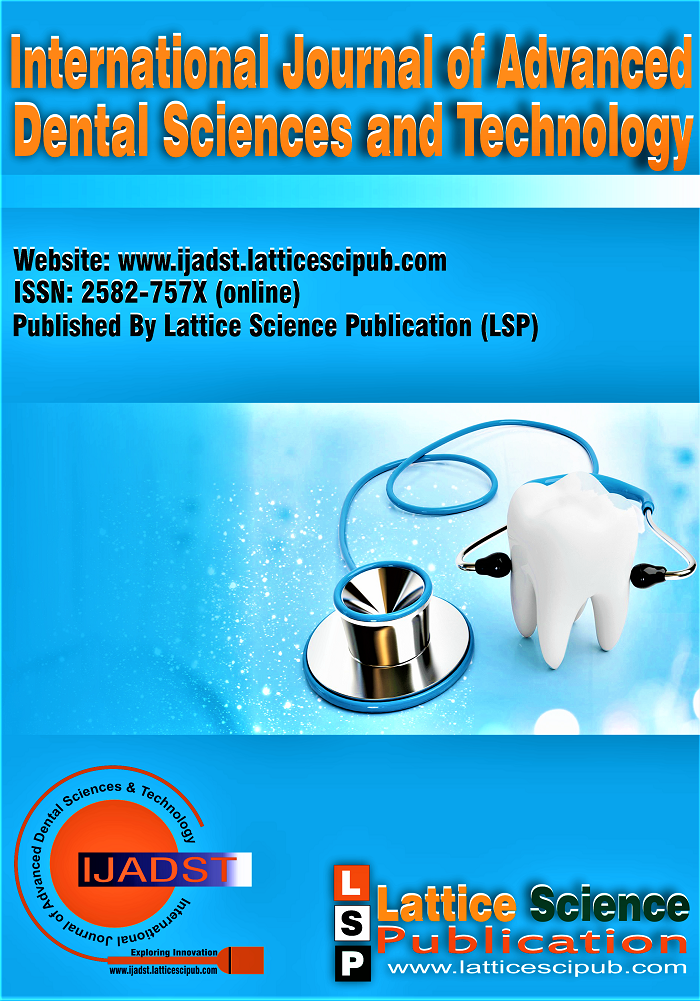The Importance of Light Diagnosis in Joint Injuries of the Walls of the Upper Jaw Cavity
Main Article Content
Abstract
The article discusses the possibilities of computed tomography and magnetic resonance imaging when examining patients in an ENT clinic. The authors’ materials cover complex observations of diseases of the nose and paranasal sinuses. The patients were operated on, which made it possible to compare the data of radiation studies with operational findings and cytological material. CT scan in coronal projection allows to clarify the diagnosis, determine the possible causes of recurrent sinusitis and identify the individual structural features of the nasal cavity and PNS that contribute to the development of intraoperative complications. When analyzing CT data, special attention should be paid to identifying and correctly interpreting the intranasal anatomy. It is necessary to indicate in detail the location of the cyst of the maxillary sinus, which allows the surgeon to correctly choose the optimal surgical access.
Downloads
Article Details

This work is licensed under a Creative Commons Attribution-NonCommercial-NoDerivatives 4.0 International License.
How to Cite
References
Babina, A.I. Anatomical aspects of plastic surgery of the anterior wall of the maxillary sinus with connective tissue allografts: dissertation of the candidate of medical sciences - Ufa, 2018.-p.200.
Bojokov, A.R. Plastics of bone defects in the walls of the paranasal sinuses with demineralized bone grafts: thesis of doctor of medical sciences - Rostov n / a, 2012. – p.56.
Golovko K.P. et al. Therapeutic tactics for damage to the paranasal sinuses in patients with severe concomitant trauma // Russian otorhinolaryngology. - 2010. — No. 3. — pp. 52-63.
Zubareva A.A. et al. Possibilities of digital volumetric tomography in otorhinolaryngology, maxillofacial surgery and surgical dentistry // Medical alphabet. - 2012. - No. 7. – pp. 18-24.
Kryukov A.I. et al. Anatomical and histological features of the state of the structures of the ostiomeatal complex in patients with cystic lesions of the maxillary sinus // Russian otorhinolaryngology. - 2016. - No. 2 (81). - pp. 60-65.
Mareev O.V. et al. Computer craniometrics using modern technologies in medical // Morphological statements. - 2015. - No. 1. - pp. 49-54.
Piskunov S.Z. et al. Anatomical and morphological features of the nose and paranasal sinuses of a rabbit // Russian rhinology. - 2015. - T. 23, No. 3. - pp. 36-41. [CrossRef]
Khatskevich G.A. et al. To the question of the algorithm for radiation diagnosis of fractures of the midface zone, accompanied by damage to the maxillary sinus // Radiation diagnostics and therapy. -2014. - №4.-pp.57-62.
Mehta N. The imaging of maxillofacial trauma and its pertinence to surgical intervention // Radiologic Clinics of North Amer. —2012. — № 1. — pp. 43-57. [CrossRef]
Naveen Shankar A. The pattern of the maxillofacial fractures: a mul-ticentre retrospective study // J. of Cranio-Maxillo-Facial Surgery. — 2012. — № 8. — pp. 675-679. [CrossRef]
Salentijn E. G. A ten-year analysis of midfacial fractures // J. of Cranio- Maxillofacial Surgery — 2013. — № 7. — pp. 630-636. [CrossRef]
Sohns J. M. Current perspective of multidetector computed tomog-raphy (MDCT) in patients after midface and craniofacial trauma // Clinical Imaging.— 2013.— № 4.— pp. 728-733[CrossRef]





